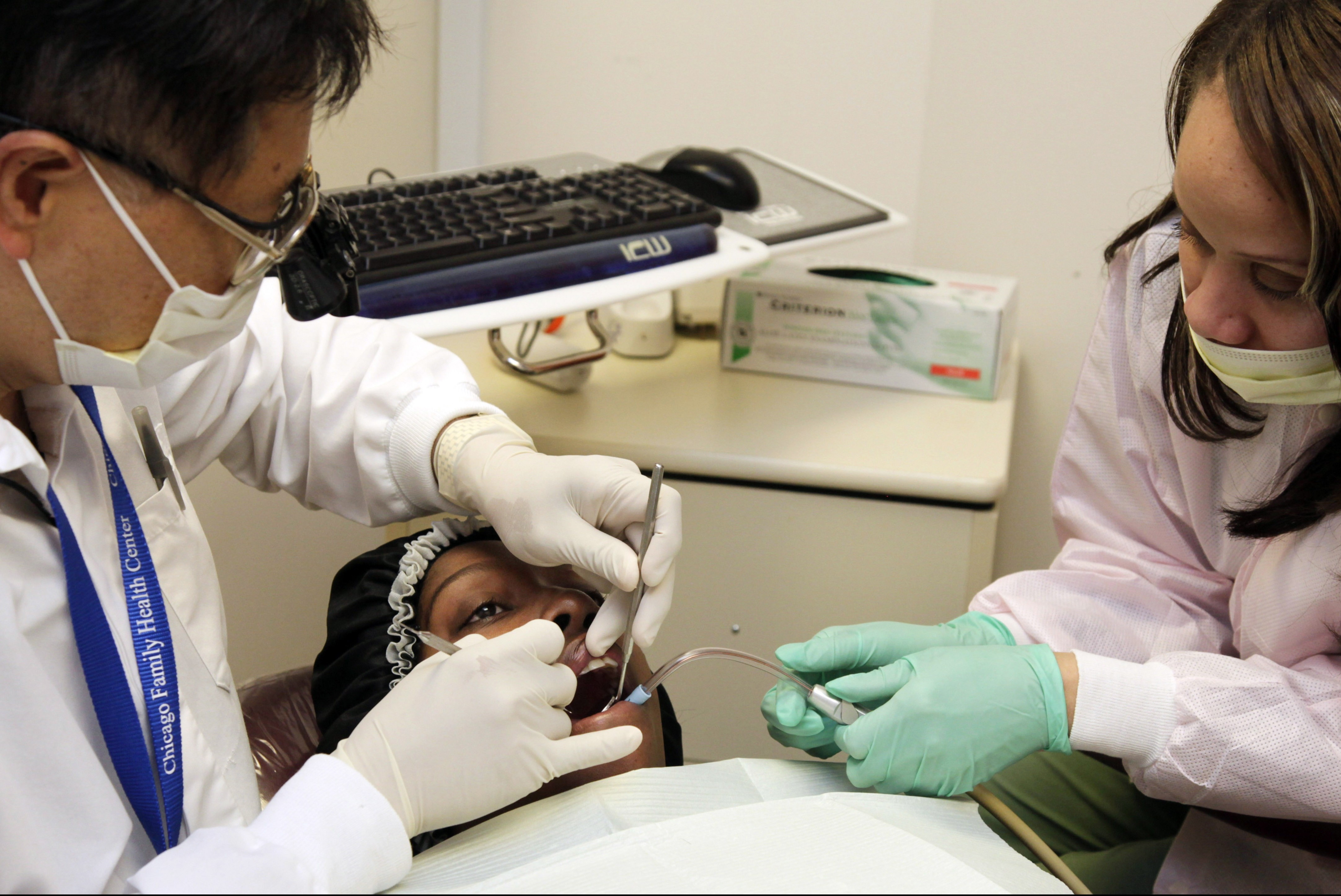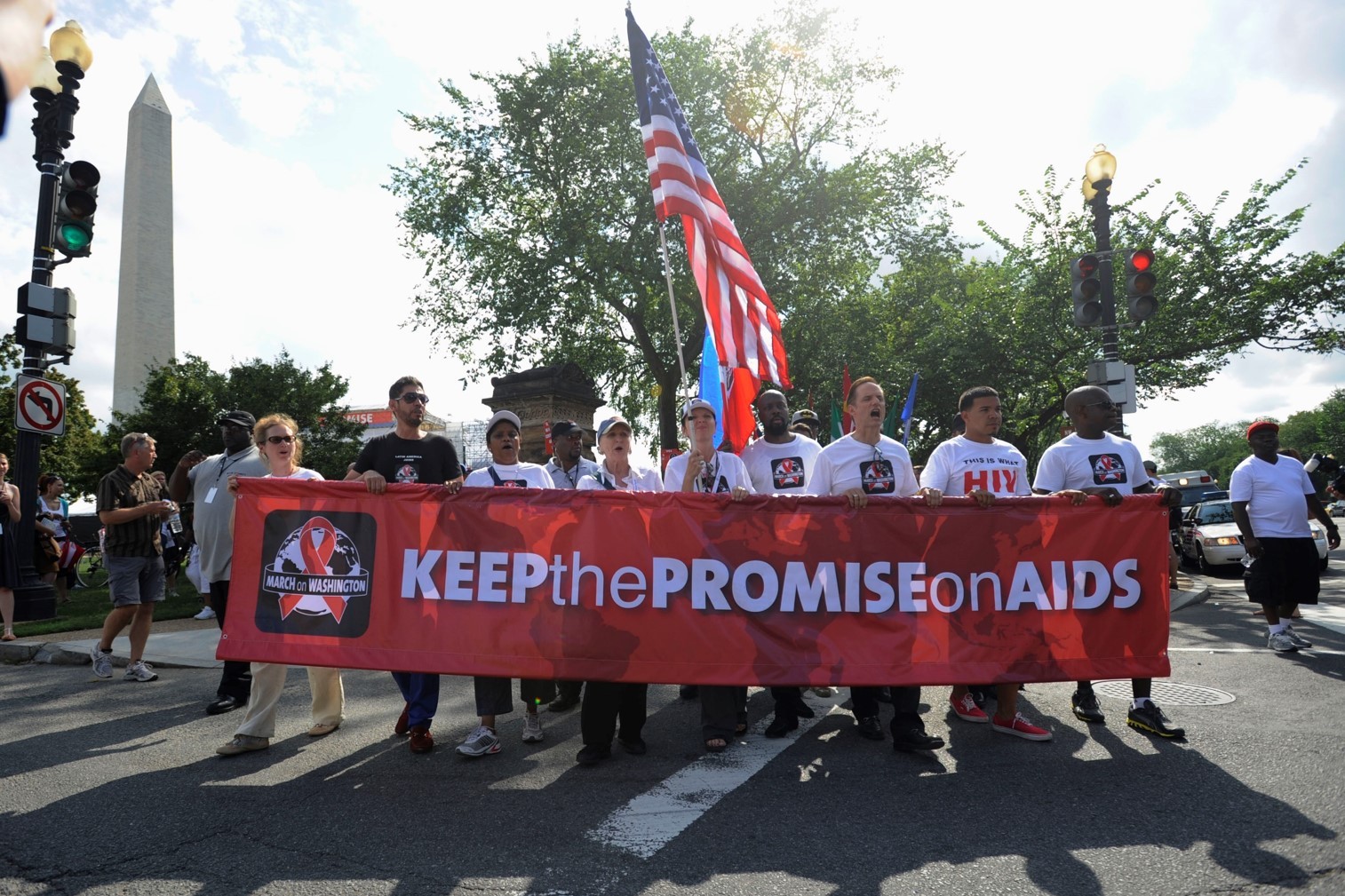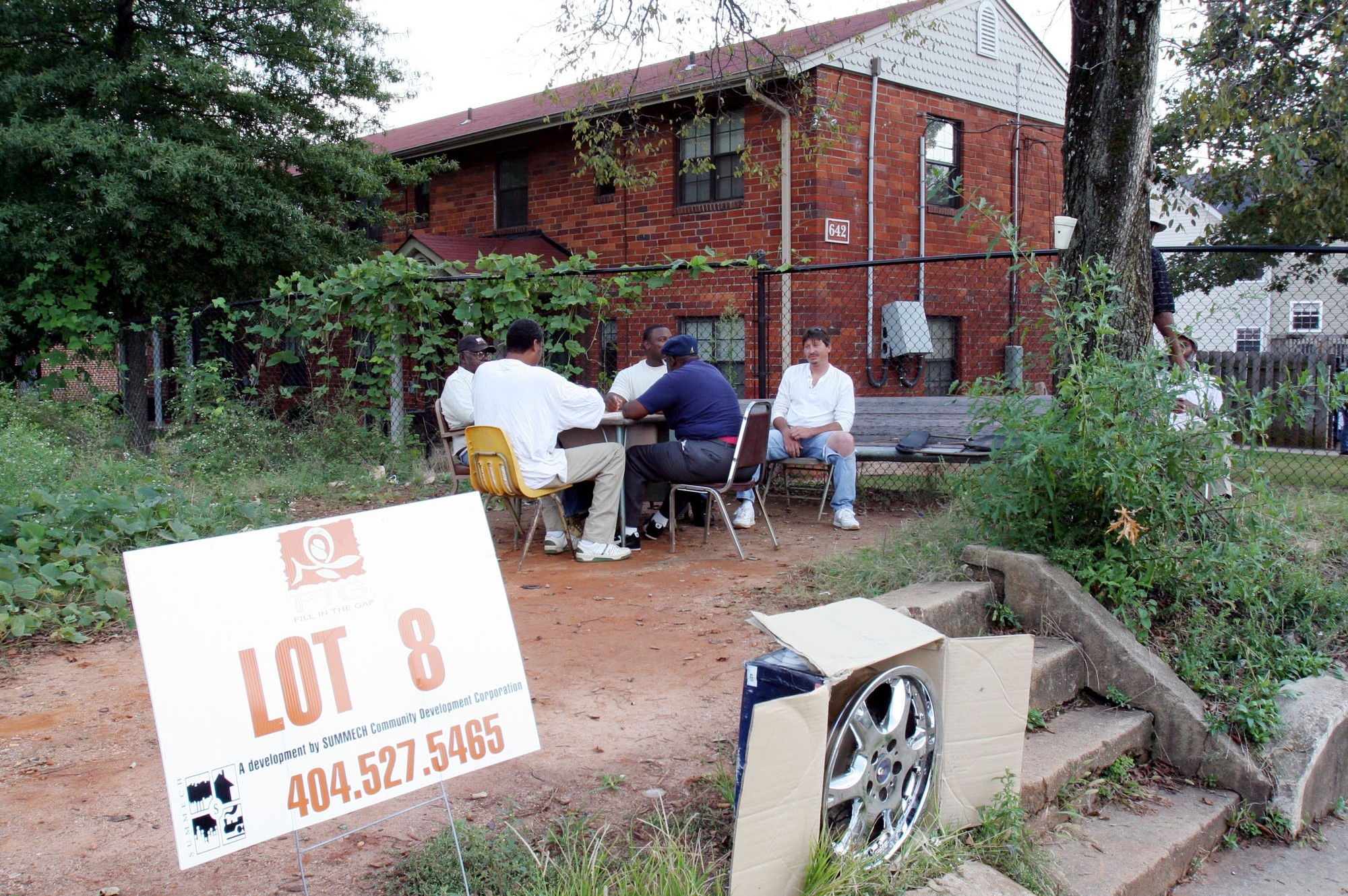Can My Brother’s Keeper Fulfill Its Promise Without Keeping Sisters Too?
My Brother’s Keeper: Toward a More Inclusive Nation
Lisalyn R. Jacobs: Can My Brother’s Keeper Fulfill Its Promise Without Keeping Sisters Too?
The President’s announcement of the My Brother’s Keeper (MBK) initiative did not surprise me. I advocate on behalf of a women’s rights organization; I worked through several sessions of Congress with the offices of then-Senator Barack Obama and Representative Danny Davis on their fatherhood bill.
I was, however, frustrated by the announcement and I remain so.
The initiative contemplates a public-private partnership with the federal government primarily using the power of the bully pulpit – though Administration officials have also taken part in community outreach and listening sessions, and spent a considerable amount of time and effort to gather, synthesize, evaluate and submit a first report to the President. But MBK looks past struggling girls and at-risk young women while urging that time and resources be spent on at-risk boys and young men.
Let me be clear: I think that programming that supports children and young men and women in at-risk communities is vital, and desperately needed. I salute the President for acknowledging the need for a focus on the needs of youth in communities that are—as we have seen in Ferguson this summer—under siege.
What troubles me, however, are two things: The suggestion that the problems being faced by boys and young men of color are so unique – or so much worse than those that girls and young women face – that they need their own initiative; and the related but in some ways more dangerous idea that the violence that young men face is more deserving of focused attention.
In a recent editorial, the Washington Post summarized the “men of color are at greatest risk” argument this way: “That minority men are at disproportionate risk throughout their lives has largely been seen as unavoidable.”
What this observation fails to acknowledge is that the minority males that are the focus of MBK live in places where crime rates are high, homicides are commonplace, and schools are oftentimes failing, and consequently, that these are problems for everyone in the community: struggling families and their boys and girls, alike.
For instance, schools compound the problem by disproportionately sanctioning youth of color, from preschool age and up. Black girls are suspended at rates higher than girls of any other race and most racial groupings of boys as well. The fact that the suspension rate for African American boys is 20 percent – versus a 12 percent rate for black girls – should send a message that the education system needs to do better by all youth of color; not that young men should be the chief focus of the Administration’s first major initiative to examine the enduring and entrenched problems experienced by youth of color in at-risk communities.
Additionally, whether you look at educational attainment or economic prospects, black and Hispanic men and women are doing worse both in absolute terms and relative to their white counterparts.
Nevertheless, I’ve encountered too many people who have fallen prey to the notion that MBK and similar programs that exclude or marginalize at-risk girls are the solution. Two problems stem from this view: 1) providing more opportunities in at-risk communities will not change the preconceptions and bias that felled Jordan Davis, Renisha McBride, and most recently Mike Brown; 2) focusing on young men exclusively (or primarily) overlooks the fact that young women are similarly situated and that the unique challenges they face might very well be ignored by this type of “trickle down” programming. To paraphrase a post-Ferguson tweet I saw recently, “you can’t [save just] half the community.”
People point to the salience of the verdict in the Trayvon Martin murder case, and now, the killing of Mike Brown to explain the narrow focus of MBK on young men. The concern in these cases grows, at least partially, out of this country’s ugly past, which is strewn with black and brown bodies that were lynched or otherwise dispatched for reasons trivial to non-existent, and never with the sanction of a court. So, it’s crucial to recall that black women were lynched, too, with the earliest records dating back to the late 19th century. And it’s equally important to recognize that women of color, including trans women, continue to be brutalized and murdered, whether by law enforcement or private citizens (see here, here, and here). Moreover, we cannot hope to begin the work of dismantling the systems that permit this kind of institutionalized oppression to continue unless we acknowledge that Asian, Arab, Latino, and Native communities are at-risk as well.
As we observe the 20th anniversary of the Violence Against Women Act this month, it’s important to point out that the type of violence that women of color experience is simultaneously similar to and distinct from the kind of violence most often experienced by men. Young women in many of the above-mentioned communities also struggle with staggering levels of domestic violence and sexual assault (see also here). This violence is particularly difficult to identify and respond to because of underreporting, which is connected to the pervasive levels of police mistrust in of color, Native, immigrant, and LGBT communities. And, as we’ve been reminded recently, the failure to report can also be a result of crimes of sexual violence being perpetrated by the police.
There is a deep reservoir of expertise within the Administration when it comes to providing culturally appropriate services in communities that are rightfully dubious of law enforcement, and supports for children who have witnessed violence. These are among the approaches that MBK should assess and replicate in the months ahead. As the Administration contemplates the way forward for MBK, it is also vital that the program includes a focus on the ways in which violence and other obstacles – including poverty, maternal morbidity, reproductive justice, underemployment, limited access to apprenticeships and job training – manifest in the lives of girls and young women of color. Until both MBK and its well-financed external counterpart, the Boys and Men of Color Initiative, widen their focus to include girls and young women of color, at-risk communities will have neither the tools nor the resources necessary to ensure that they can move forward and flourish. Make no mistake: there is no going forward, unless we all go forward together – boys and girls, young men and young women, are our collective future.
The fact is that the challenges at-risk boys and girls face are community challenges. Until we are all safe and prospering, none of us will be.
Lisalyn R. Jacobs is V.P. of Government Relations at Legal Momentum. She leads the organization’s federal advocacy on violence against women, poverty, and economic issues. A single mother, she lives in the suburbs of Washington, D.C. with her 6 year-old son. On Twitter: @LRockL
Get Talk Poverty In Your Inbox
***
Sam Fulwood III: My Brother’s Keeper: Toward a More Inclusive Nation
Not long after President Obama announced his “My Brother’s Keeper” initiative, an ambitious effort to rally public and private support for boys and men of color, a group of concerned activists mounted a high-visibility campaign to alter – some might say, to undermine – the White House plan. Surprisingly, this rear-guard action came, not from the ranks of right-wing conservatives, but from the President’s skeptical, left-most flank.
The African American Policy Forum, which describes itself as “an innovative think tank connecting academics, activists, and policy-makers to dismantle structural inequality and engage new ideas and perspectives to transform public discourse and policy,” assumed leadership in the effort to compel the White House to include women and girls in the “My Brother’s Keeper” Initiative. The group collected signatures of more than 1,000 women of color demanding gender equality in the President’s program and rallied 200 black men to publish an open letter in a major newspaper.
While their argument packs the emotional wallop of seemingly protecting the interest of girls and women, the logic is faulty and the public shaming tactic is divisively misguided. Arguments that President Obama’s initiative to support boys and men of color is somehow disrespecting or ignoring the plight of black girls and women strikes a hollow and discordant note. Worse yet, it comes from within the ranks of those who profess to share the President’s ultimate objective of creating a fairer society and more opportunity for all.
To be clear, those critical of the “My Brother’s Keeper” effort are focused on tactics and resources, not the end goal. Like politicians, social activists must marshal money and media attention to drive public support to its cause. In and of itself, that’s neither a good, nor bad thing; it’s the way of the public policy world.
But public policy is just that, serving the greater good of the entire society. If the policy is well-crafted and executed, the larger society will benefit. The acid test of a targeted effort, such as “My Brother’s Keeper” would be whether all – not just boys and men of color – prosper. True, women and girls of color, too, have challenges deserving focused attention. So do communities of immigrants and people with disabilities and folks in the LGBT communities.
But in a universe of short attention spans and limited (to nonexistent) resources, can we target all at once? Where does the President (or any socially conscious group) draw a line when seeking to reach the greatest public policy end? Or, stated another way, is support for one cause, by definition an affront to another? It doesn’t have to be.
Indeed, such fallacious zero-sum thinking is at the heart of the opposition to the “My Brother’s Keeper” Initiative. “My Brother’s Keeper” draws one set of targeted efforts to protect boys and men of color, but there’s nothing about it that excludes anyone – including women and girls. Quite the contrary, if the President’s initiative is successful, the totality of America will benefit.
Valerie Jarrett, the Senior Advisor to the President, argues that line of reasoning in defending the White House and pointing out its efforts to assist girls and women. “I think the flaw in logic is not understanding that this is not either/or, this is both/and,” Jarrett said in a recent appearance television interview to defend the initiative.
The same logic undergirded a recent White House Summit on Working Families, where the President made it clear his focus is on improving the life opportunities for all Americans, including women and girls.
And here is a critical point: All too often, these issues are thought of as women’s issues, which I guess means you can kind of scoot them aside a little bit. At a time when women are nearly half of our workforce, among our most skilled workers, are the primary breadwinners in more families than ever before, anything that makes life harder for women makes life harder for families and makes life harder for children. When women succeed, America succeeds, so there’s no such thing as a women’s issue. . . .This is a family issue and an American issue — these are commonsense issues.
john a. powell, director of the Haas Institute for a Fair and Inclusive Society at the University of California at Berkeley, and Maya Rockeymore, chief executive of the Center for Global Policy Solutions, are convincing in their support of “My Brother’s Keeper’s” targeted approach. In an essay for The Chronicle of Philanthropy, they draw an analogy to public debates over to the Americans with Disabilities Act, which became law in 1990 and outlawed discrimination based on disability and provided protections for the disabled. It was a targeted law that proved to be beneficial to a much larger, public body. They write:
We can understand this idea if we think of individuals who are in a wheelchair trying to reach an upper floor. An escalator will not support those individuals in the same way as it would those who are able-bodied. It is not the disabled group that needs fixing but the structure. The goal is to convey everyone to the upper floor, and it is universal. But the strategy to achieve this goal must be targeted toward the disabled individuals to address their circumstances, which differ from those of other groups. We call this strategy “targeted universalism.”
Does this mean that we should only focus on the individuals in the wheelchair? No.
But neither does it mean that we treat all groups attempting to get to the upper floor the same. A targeted universalism approach is concerned about the mobility of all groups while recognizing that some groups will require targeted strategies to get there.
Should we remain concerned about groups that are still not being targeted or well served, such as women and girls of color? The simple answer is yes.
Notice that if we build an elevator, it benefits not only the wheelchair-bound group but also everybody else. When we transform structures to work for marginalized groups, it can often benefit all groups, and it certainly doesn’t harm any of them, including those with unlimited mobility.
Unfortunately, rational reasoning falls hard on the ears of advocates who imagine an overflowing gravy train of administration focus on men and boys of color and their exclusion from the philanthropic largess. They’re wrong. And worse, in their crabs-in-a-barrel attacks, they do harm to an initiative that offers promise to help move us toward a fairer, more inclusive nation.
Sam Fulwood III is a Senior Fellow at the Center for American Progress and Director of the CAP Leadership Institute. His work with the Center’s Progress 2050 project examines the impact of policies on the nation when there will be no clear racial or ethnic majority by the year 2050.











